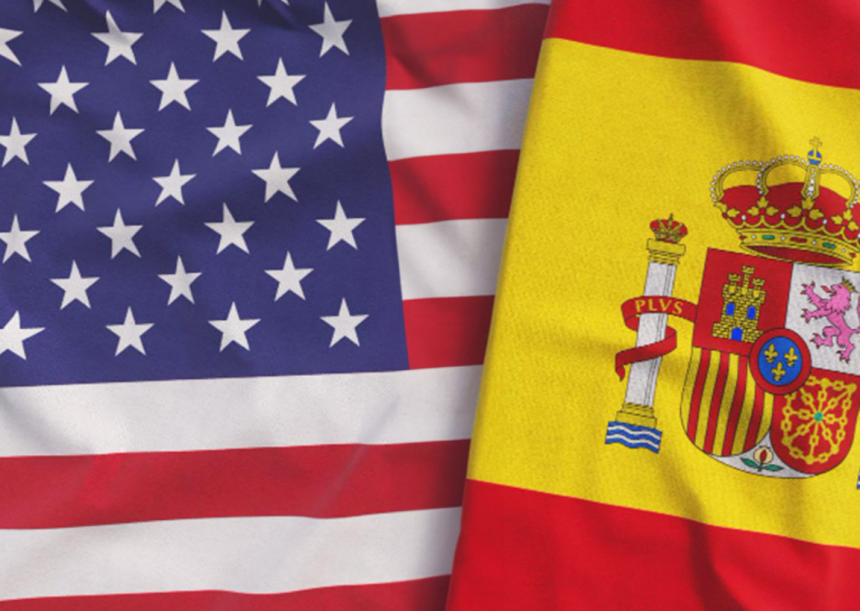Spain is entering increasingly turbulent territory as U.S. protectionist trade policies threaten to destabilize key sectors of its economy. While the direct exposure remains moderate, indirect vulnerabilities and spillover effects could amplify the strain.
- 1. A Harsh Reaction: Spain Unveils €14.1 Billion Rescue Plan
- 2. Limited Exposure — But Strong Indirect Risks
- 3. Economic Forecasts Paint a Mixed Picture
- 4. Market Volatility and Sectoral Strain
- 5. Political Tensions: NATO Dispute Adds Fuel
- 6. A Glimmer of Resilience: Services and Domestic Demand
- Conclusion: Navigating a Trade Crisis with Strategic Resilience
1. A Harsh Reaction: Spain Unveils €14.1 Billion Rescue Plan
Prime Minister Pedro Sánchez responded forcefully to the U.S. decision to impose 20–25% tariffs on European imports. His administration announced a €14.1 billion Trade Response and Relaunch Plan, comprising €7.4 billion in new financing and €6.7 billion drawn from existing instruments. The initiative includes direct aid, soft loans, and credit insurance to protect industries like olive oil producers, automotive, chemicals, pharmaceuticals, and more.
lamoncloa.gob.esReuters
2. Limited Exposure — But Strong Indirect Risks
Although Spain’s goods exports to the U.S. represent just 1.1% of GDP, some manufacturing branches are disproportionately exposed via global supply chains and indirect trade channels. Sectors like pharmaceuticals (8.3% of value-added reaching U.S.), metallurgy, machinery, chemicals, and mining face heightened risks. Sectors such as agriculture (including olive oil, wine, canned goods) also retain a degree of U.S. reliance.
CaixaBank Research
3. Economic Forecasts Paint a Mixed Picture
Spain is expected to maintain decent macroeconomic numbers despite rising uncertainty:
- The European Commission forecast predicts 2.6% GDP growth in 2025, slowing to 2.0% in 2026. Headline inflation should ease to around 1.9%.
Economy and Finance - The OECD outlook projects 2.4% growth in 2025 and 1.9% in 2026, though warns that export slowdown may result from U.S. tariffs and global fragmentation.
OECD - The Bank of Spain trimmed its full-year growth forecast from 2.7% to 2.4%, citing trade tensions. In the worst-case scenario (20% U.S. tariffs plus EU retaliation), annual growth may slow to 2%, potentially halving by 2026.
Reuters
4. Market Volatility and Sectoral Strain
Key sectors, like energy, are feeling the impact:
- The IBEX 35 fell over 1%, and energy-linked firms like Repsol dropped sharply amid fears of rising input costs and import restrictions.
Strategic Energy Europe
Moreover, ECB policymaker José Luis Escriva warned that the unpredictability of U.S. trade policy is undermining global financial stability. While Spain’s direct trade exposure to the U.S. is limited, indirect risks are significant. If reciprocal tariffs materialize, Spain’s average tariff on exports to the U.S. could climb from 12% to 18%.
Reuters
5. Political Tensions: NATO Dispute Adds Fuel
Political tensions have further complicated matters:
- Spain refused to commit to NATO’s proposed 5% defense spending goal, capping its target at just 2.1% of GDP. This prompted a sharp rebuke from the U.S., with President Trump warning that Spain may be forced to “pay twice as much” in trade negotiations.
ВикипедияFinancial TimesFox Business
6. A Glimmer of Resilience: Services and Domestic Demand
Despite headwinds, Spain’s economy shows signs of internal strength:
- CaixaBank Research notes that the services sector and domestic consumption are delivering momentum. Early 2025 saw GDP growth of 0.6% q/q and 2.8% y/y, and about 50% of economic sectors are expanding, up from 30% the previous year.
CaixaBank Research
Conclusion: Navigating a Trade Crisis with Strategic Resilience
Spain is at a juncture where swift policy responses and keen economic adaptation are essential. The modest direct impact of U.S. tariffs may disguise the real danger: indirect exposure, financial uncertainty, and compromised investor confidence.
The €14.1 billion rescue plan, continued emphasis on domestic consumption and services, and structural reforms aimed at export diversification and industrial modernization highlight Spain’s strategy to avert a full-blown crisis. Political acumen and a united European front will be critical as new tariffs and retaliatory measures loom.





